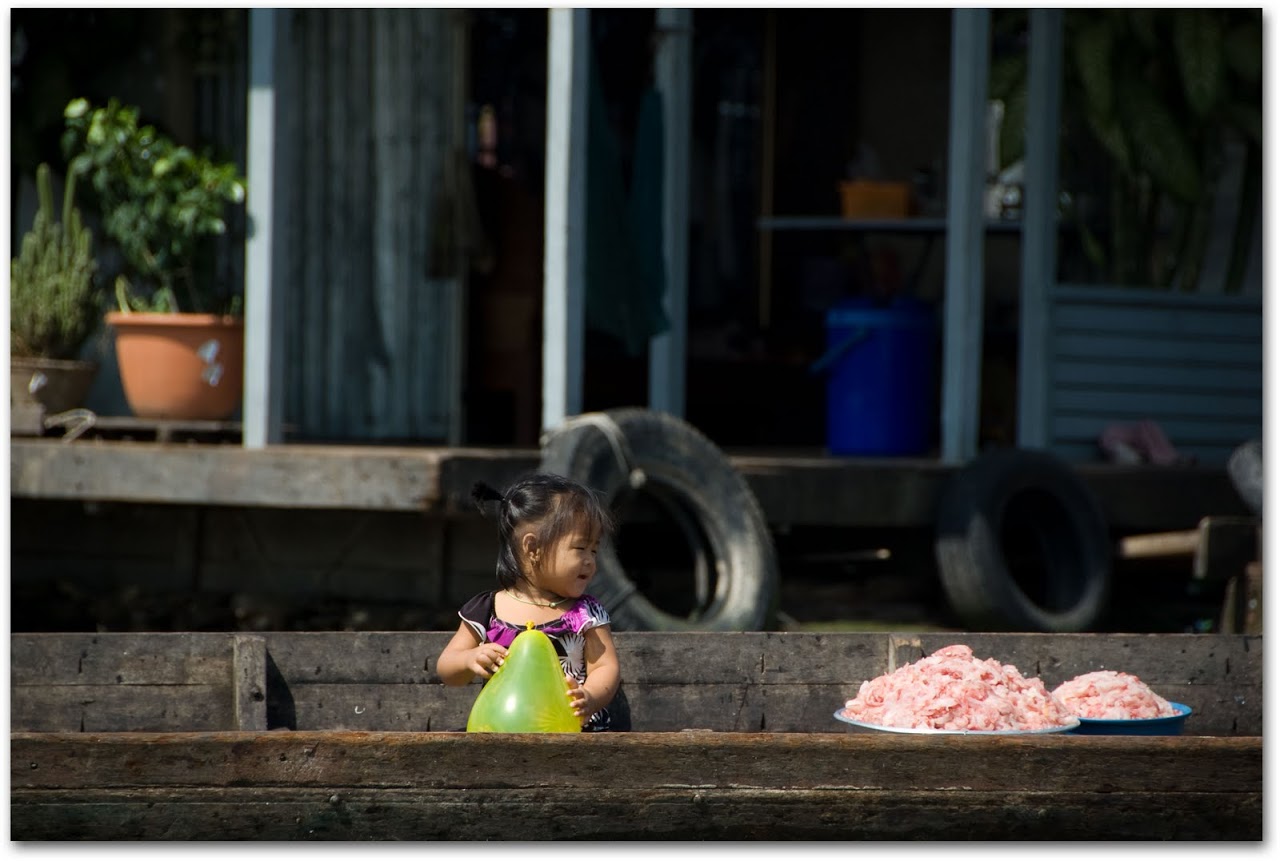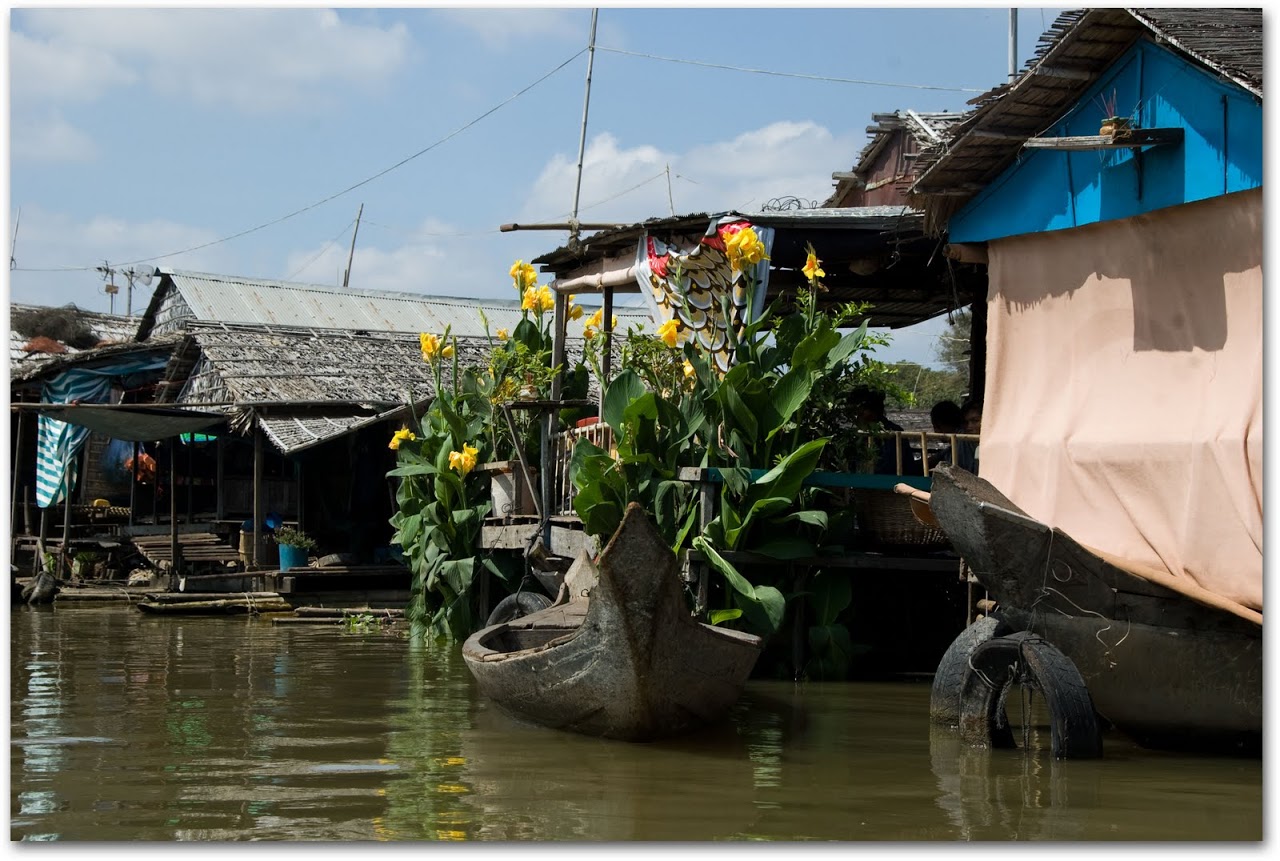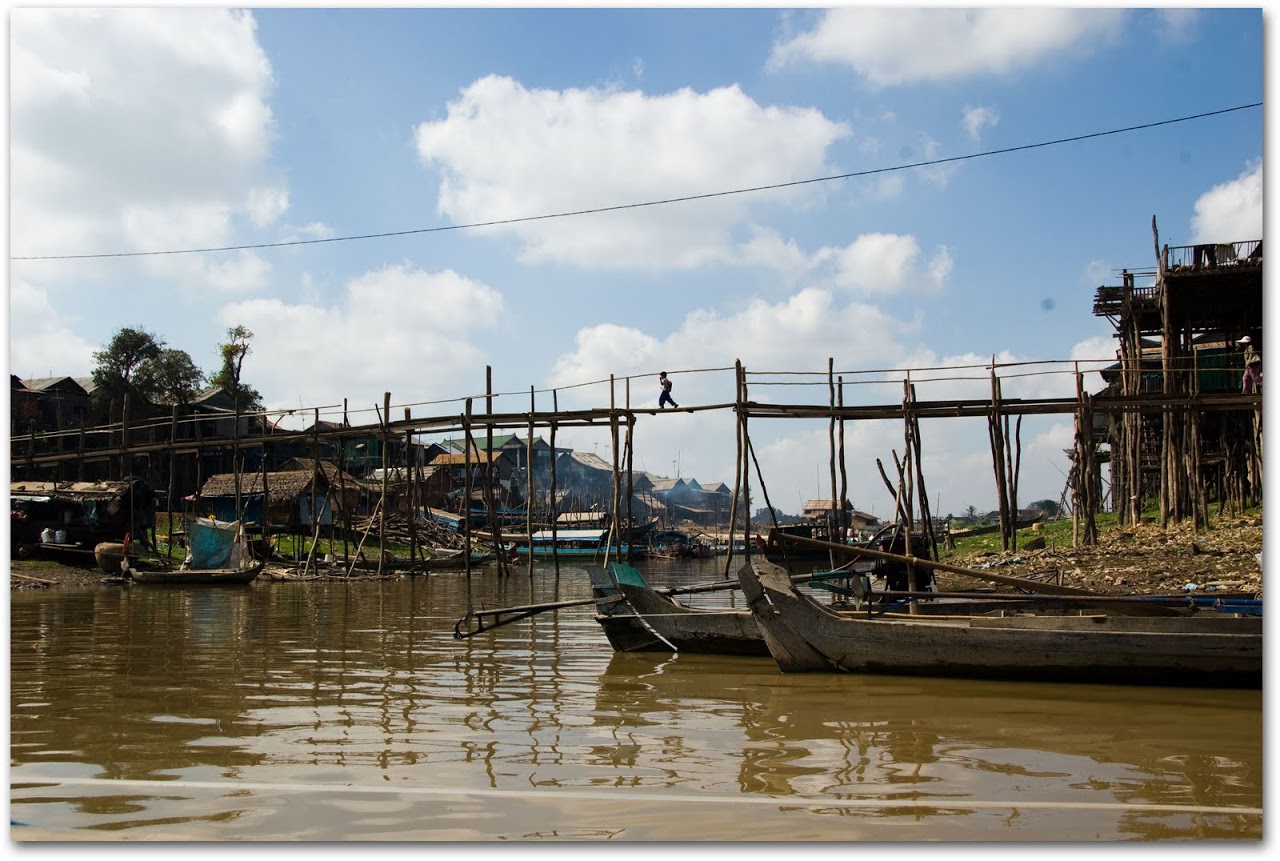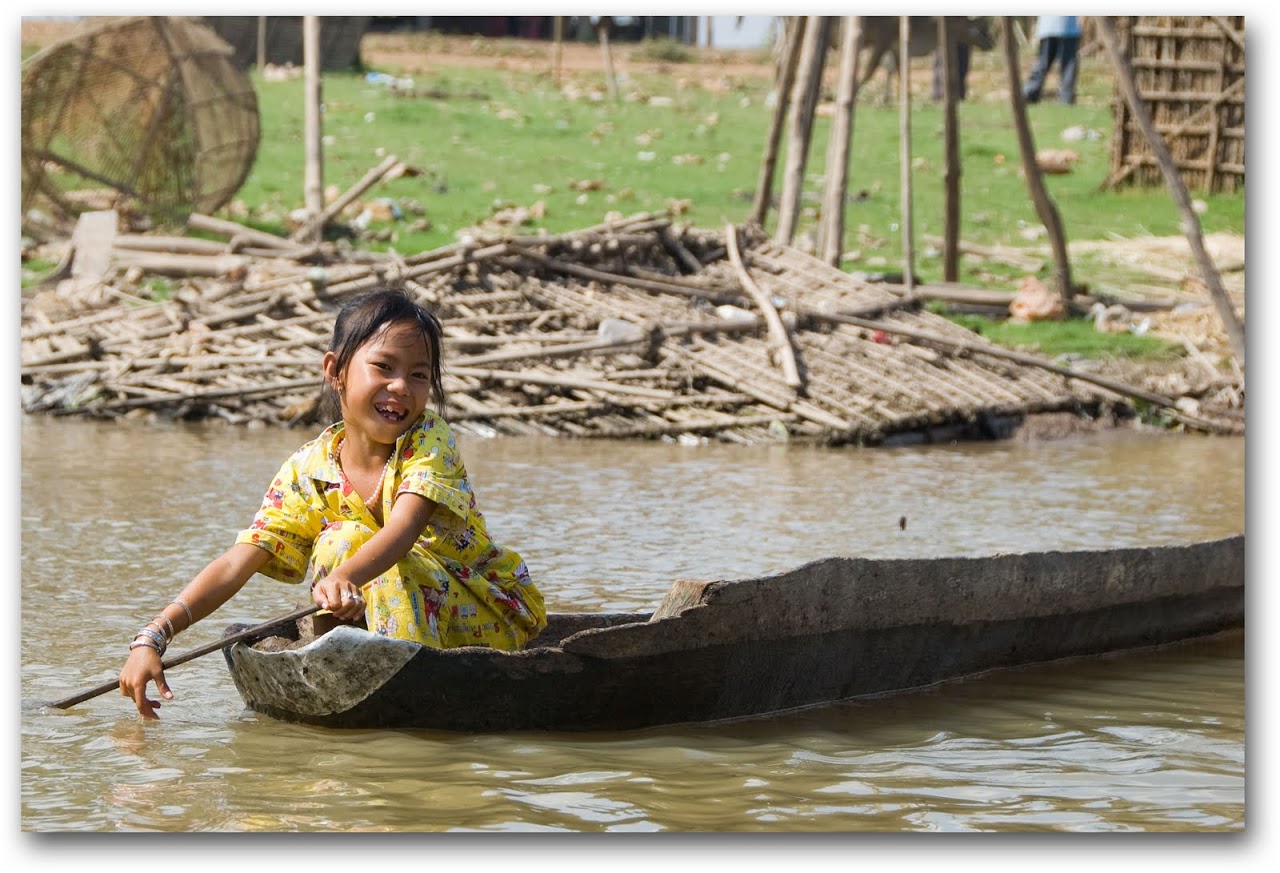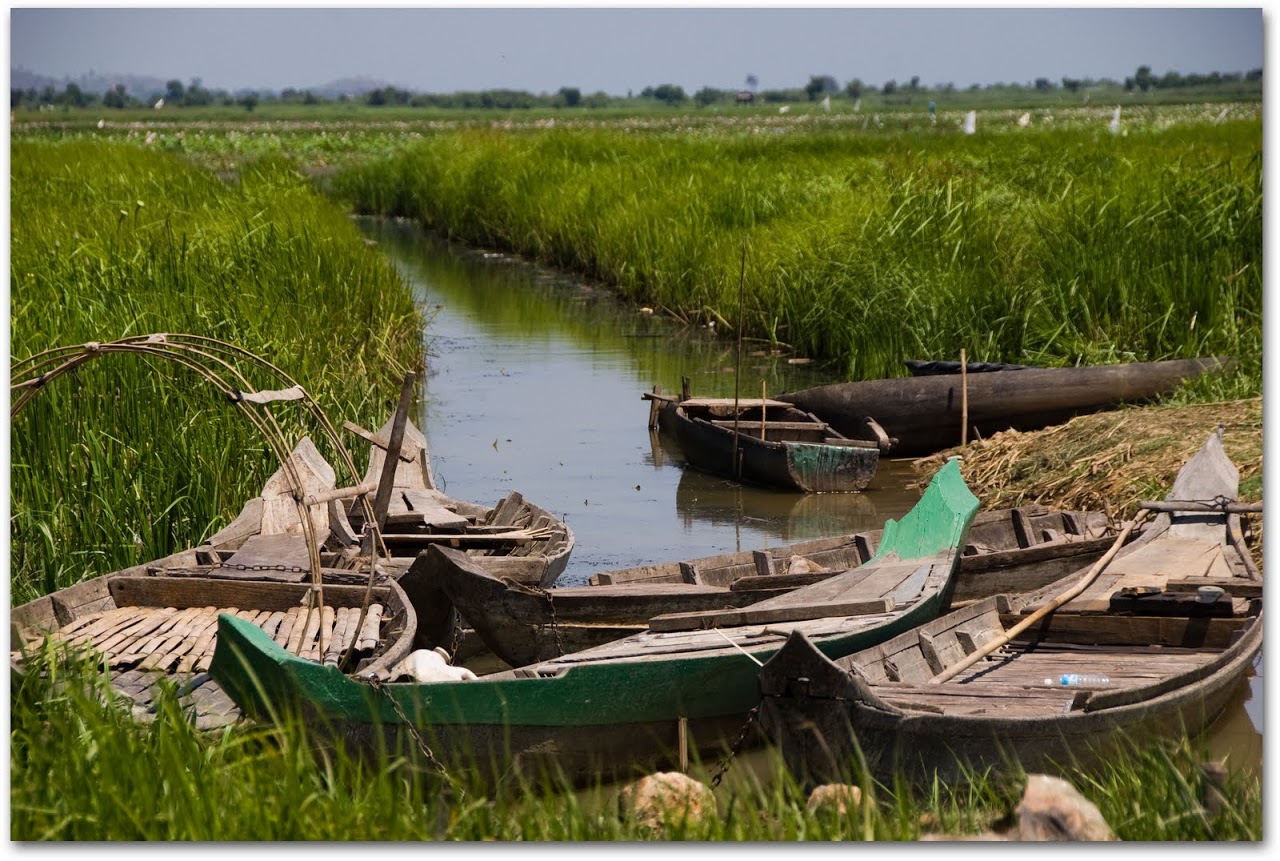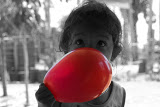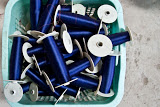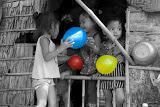Child on fishing boat
Bloggers always rave about the off-the-beaten path locations, as if we have become the Vespuccis and Lewis and Clarks of the modern day. We’re not alone, either. Lonely Planet, Frommers, Fodors, and every other guidebook company out there puts out lists of “hidden gems” and “secret destinations.” We are all searching for the Next Big Thing, hoping that we will get there before the masses, bask in its glory, and then spread the word.
Houseboats with flowers
This is not that post because I don’t think that Kompong Chhnang is the Next Big Thing. There isn’t much to do, the hotels are clean but uninteresting, there is no night life whatsoever, and the food is perhaps the worst that we had in our entire Southeast Asia trip. But, we loved it. It was my favorite city in Cambodia.
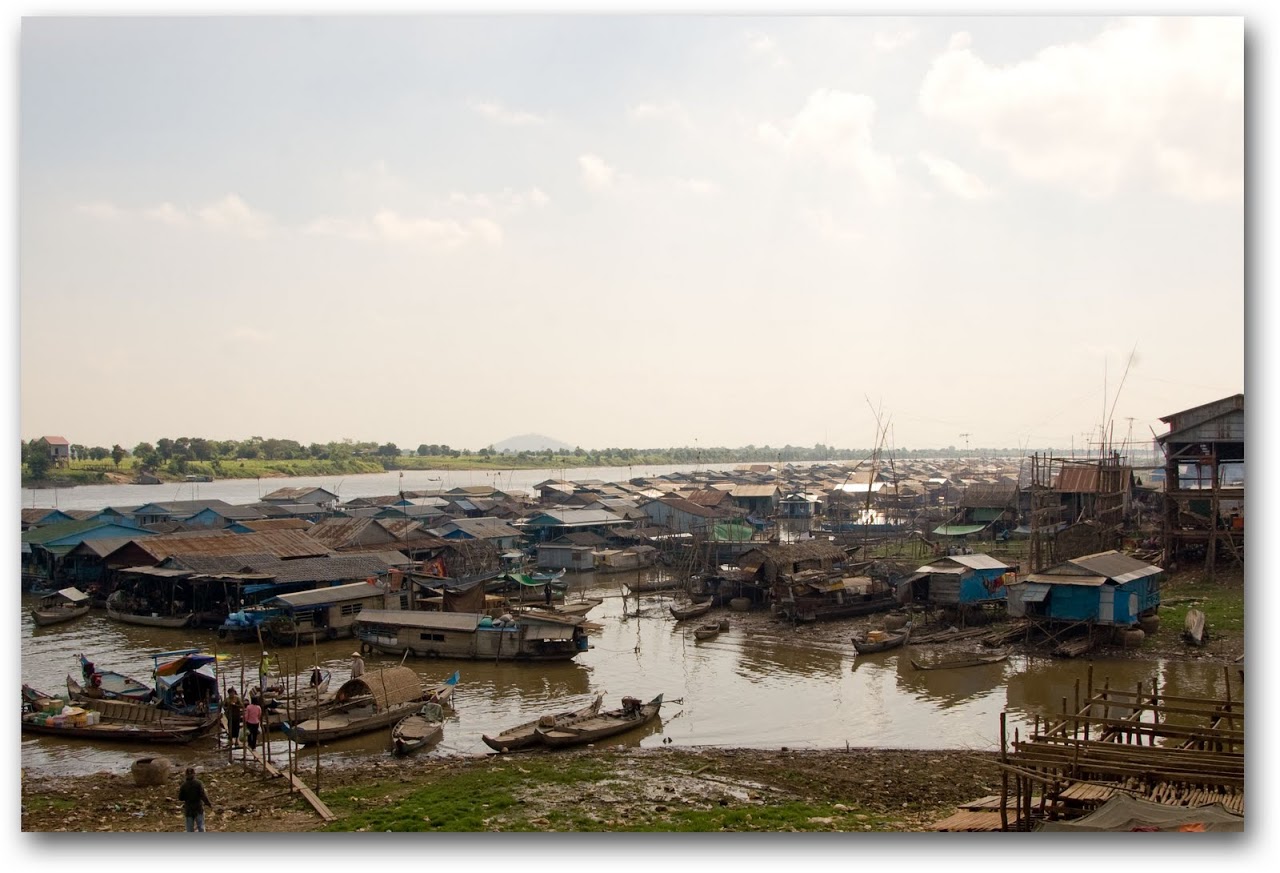
|
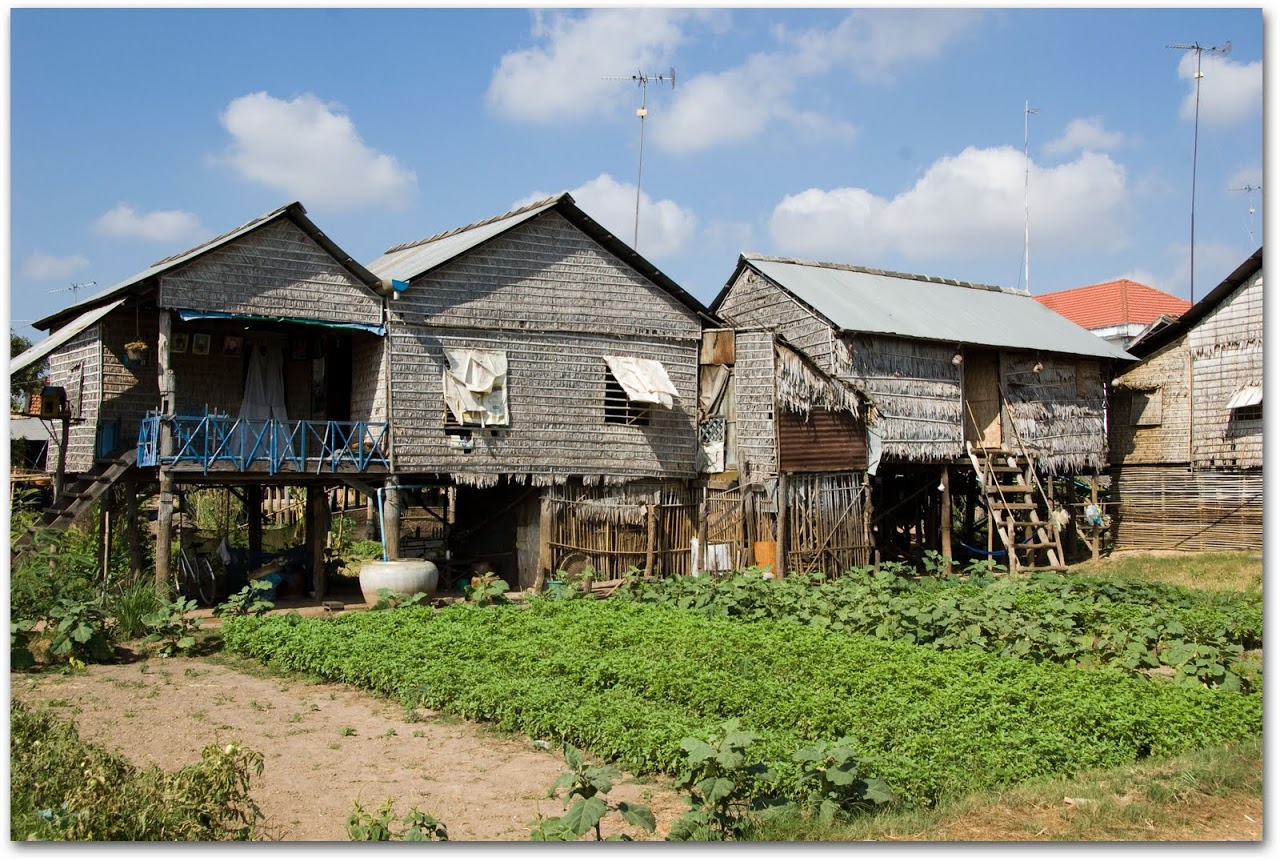
|
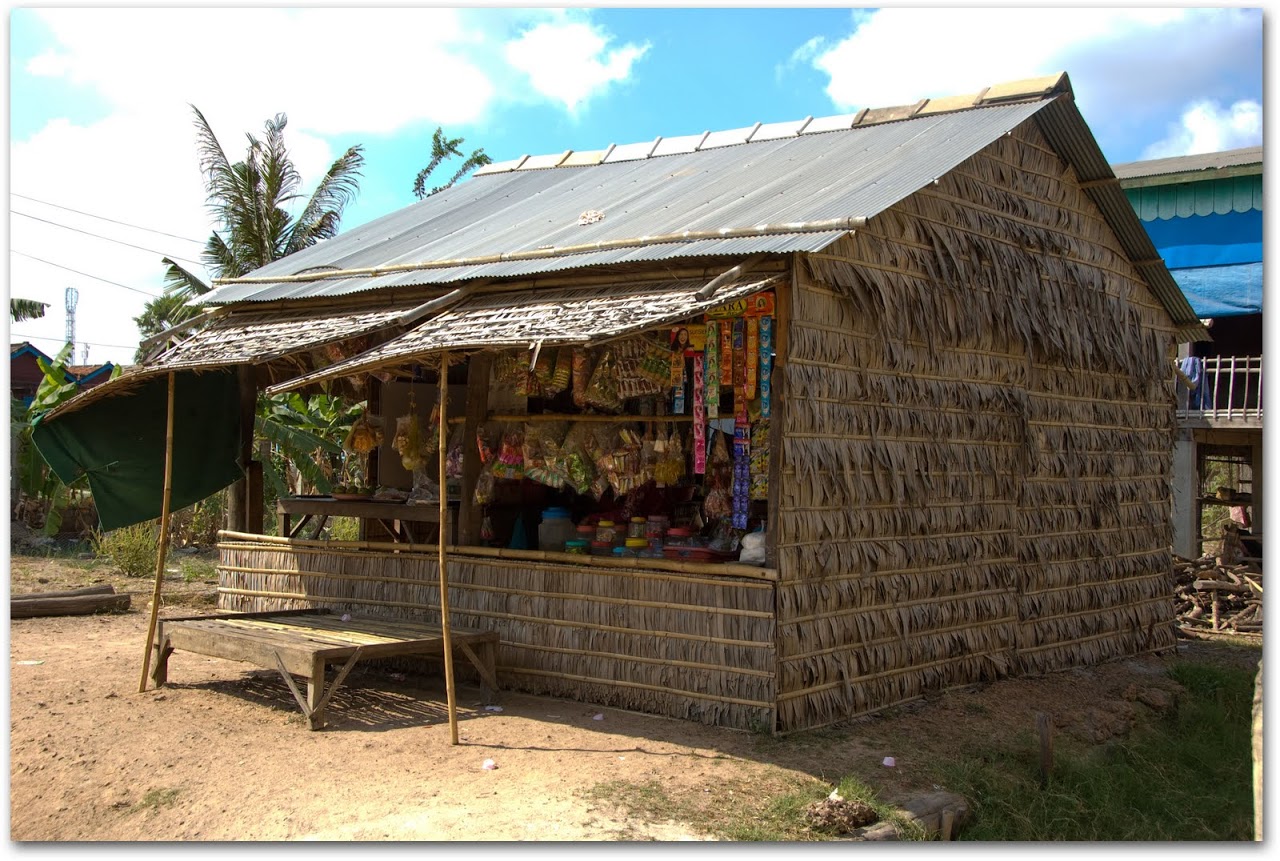
|
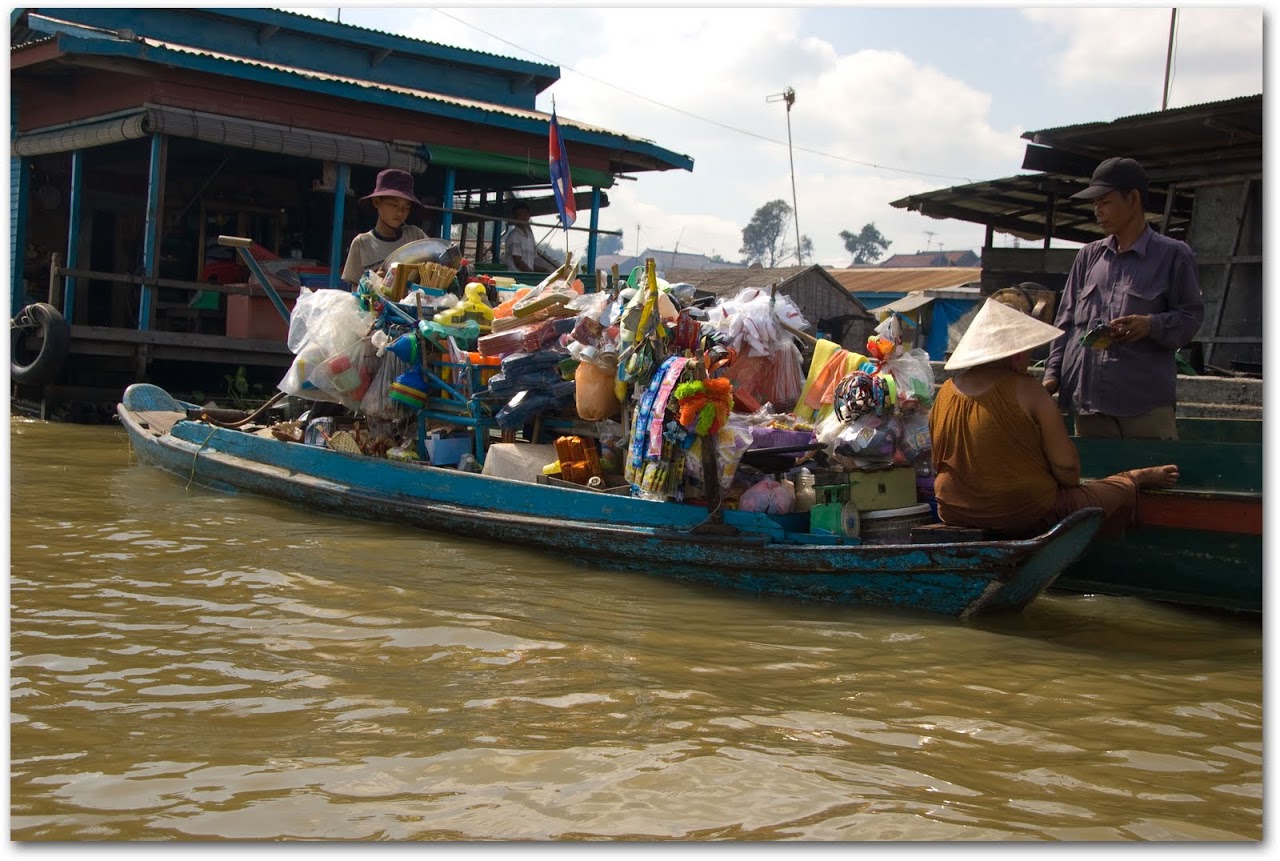
|
The allure is the honesty, the simplicity, and the sheer foreignness of the place. Nobody tries to speak English because no one knows English. Storekeepers looked confused and astonished when we tried to pay in U.S. dollars because though it is the de facto standard currency in the big cities, in Kompong Chhnang, the storekeepers use riels. There are no touts or beggars and no men yelling to you asking if you want a tuk-tuk because there are no tuk-tuks in the city.
Bridge across floating village in Kompong Chhnang
Instead, there is Kim Rath. Kim Rath is a skinny man with mocha skin and a creased square face. He captured us the moment we got off the bus from Battambang and told us that he would take us around Kompong Chhnang. “Three hours, maybe four, that’s all you need here. There isn’t much. Floating village, little temple, that’s all.” Kim said that we would sit, the three of us, on his motorbike and we would go around the village.
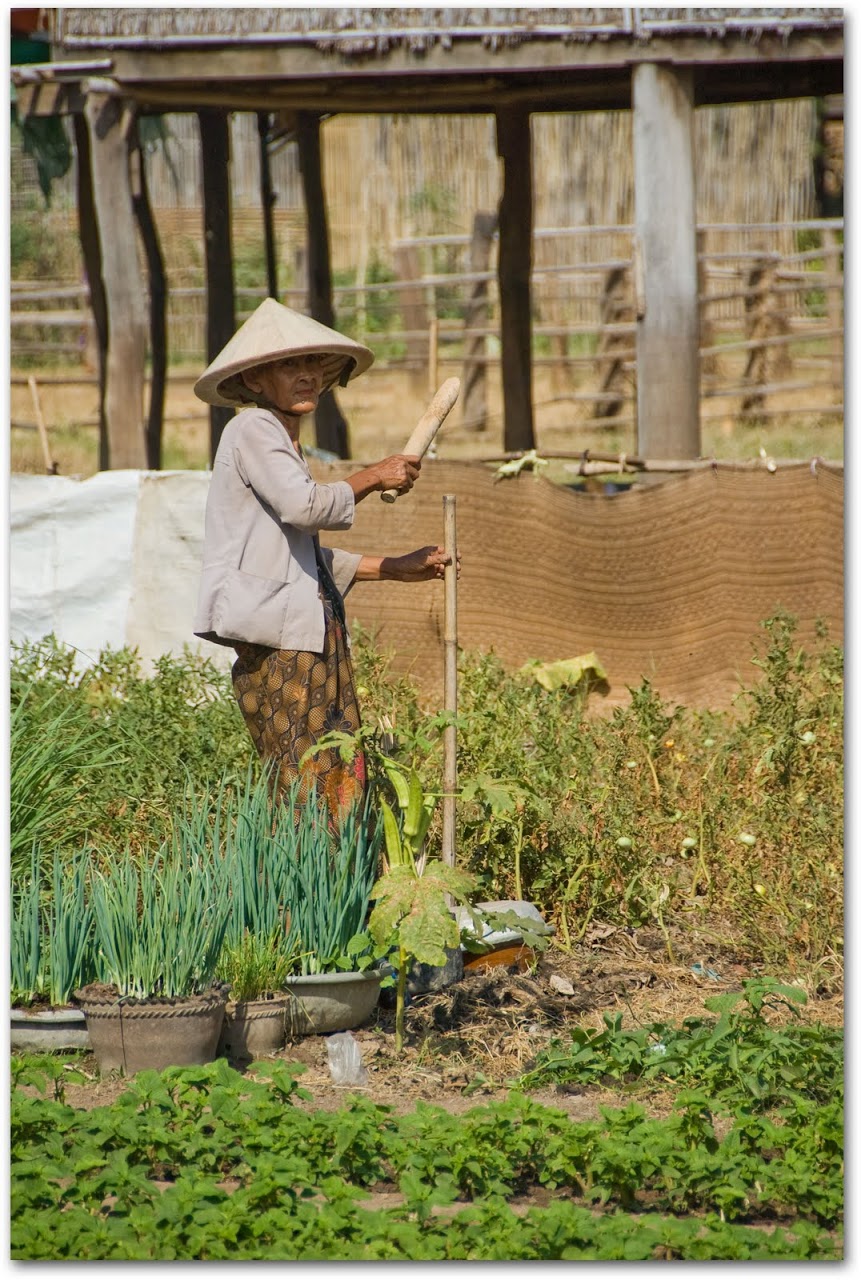
|
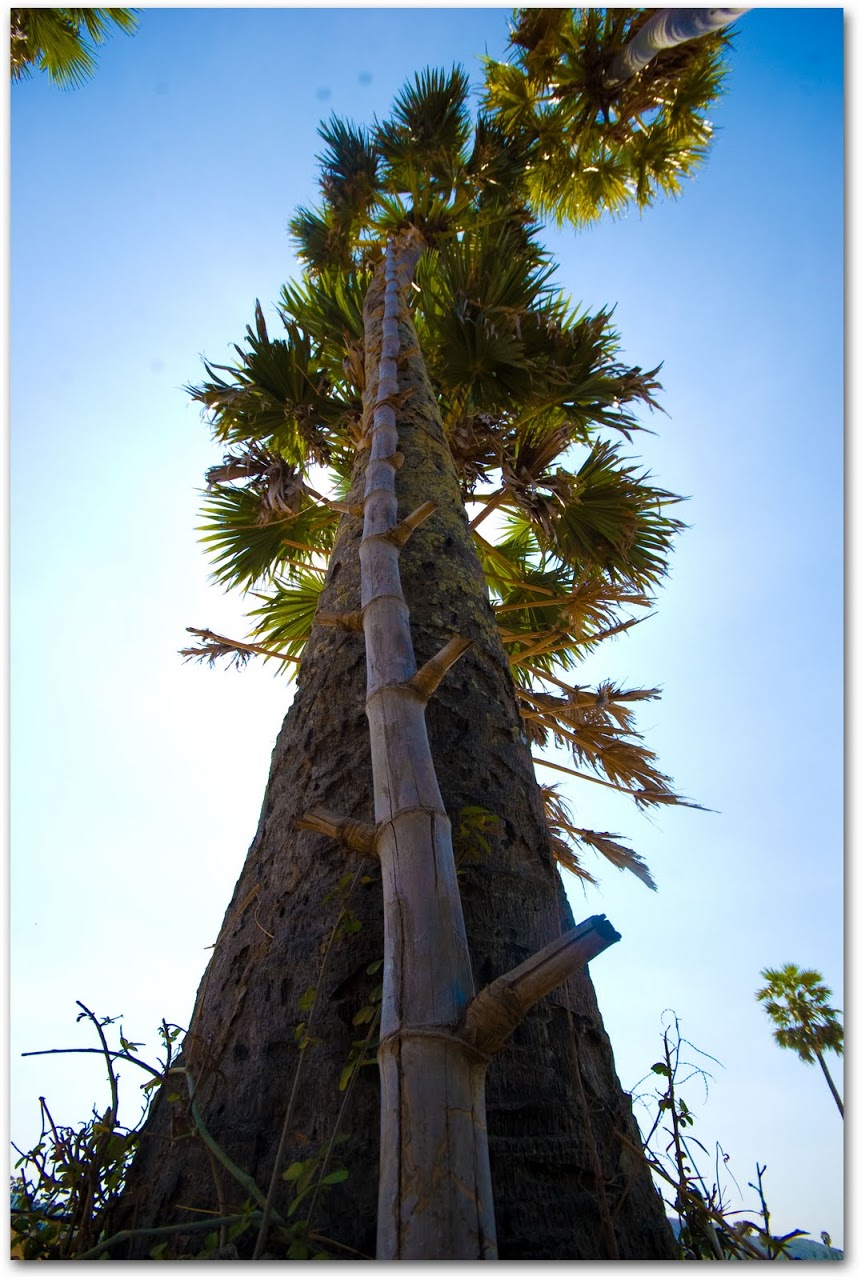
|
We weren’t sure about this plan and we asked him whether there were any tuk-tuks because three adults on one motorbike sounded like a crash course in discomfort. “No tuk-tuks here. There is only me and I am the only moto driver who speaks English.” We made a plan that he would take us the next morning and then we would head to Pnomh Penh on the afternoon bus.
Transportation in the floating village
There are so many things that we had forgotten simply because we spent eight days in the tourist-driven Siem Reap. We forgot that in the rest of Southeast Asia, punctuality is a rumor rather than a certainty. We waited impatiently for him the next morning. A half hour after he was expected, he arrived, surprised that we had been waiting. We climbed on and, indeed, the ride was as uncomfortable as we expected.

|
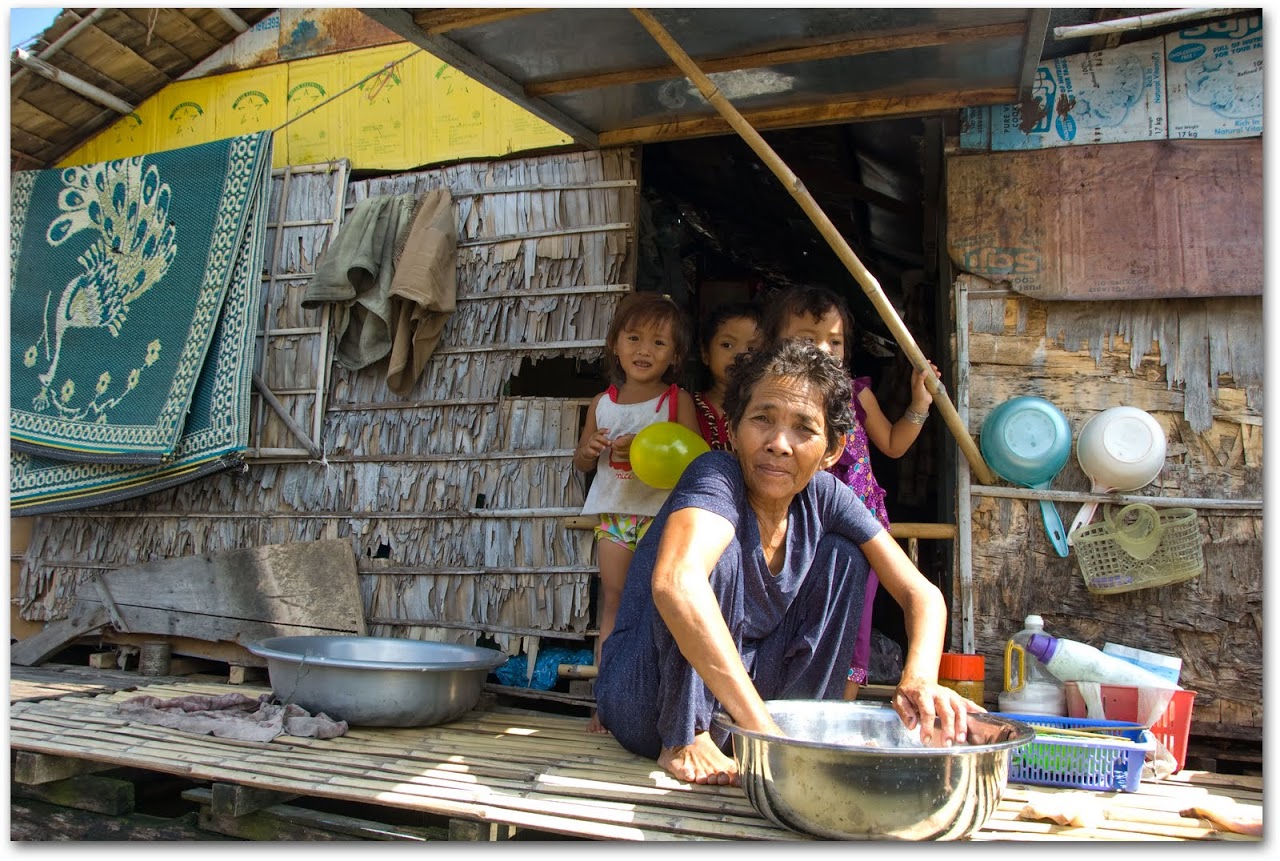
|

|
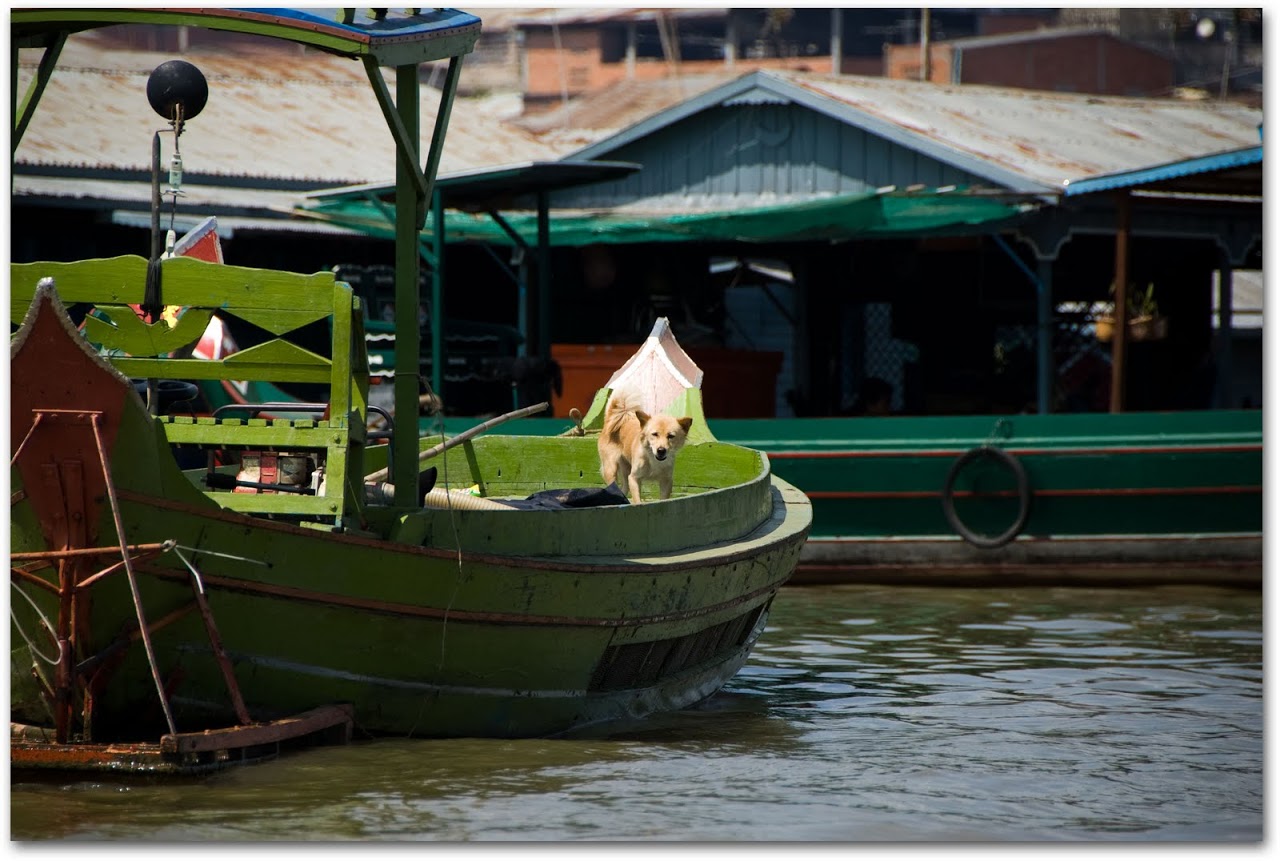
|
The river is the life of Kompong Chhnang. Houseboats bob in the murky brown water and we rowed through the floating village, leaving a path of balloons behind for the children who smiled and waved “hello.” The children paddled to us in small boats, men and women fished from their doorstep, and dogs jumped from boat to boat in a joyous game.
Boats in rice field
In the summer, the river floods the village and the rice fields grow lush and green. But now, the villagers sat in their homes bored and waited for the harvest time. We rode with Kim to the place of his friend’s son’s wedding held the night before, where we watched him sing karaoke to Khmer pop music. Plump-faced babies and young children played in the yard and we wondered when or whether these children go to school.
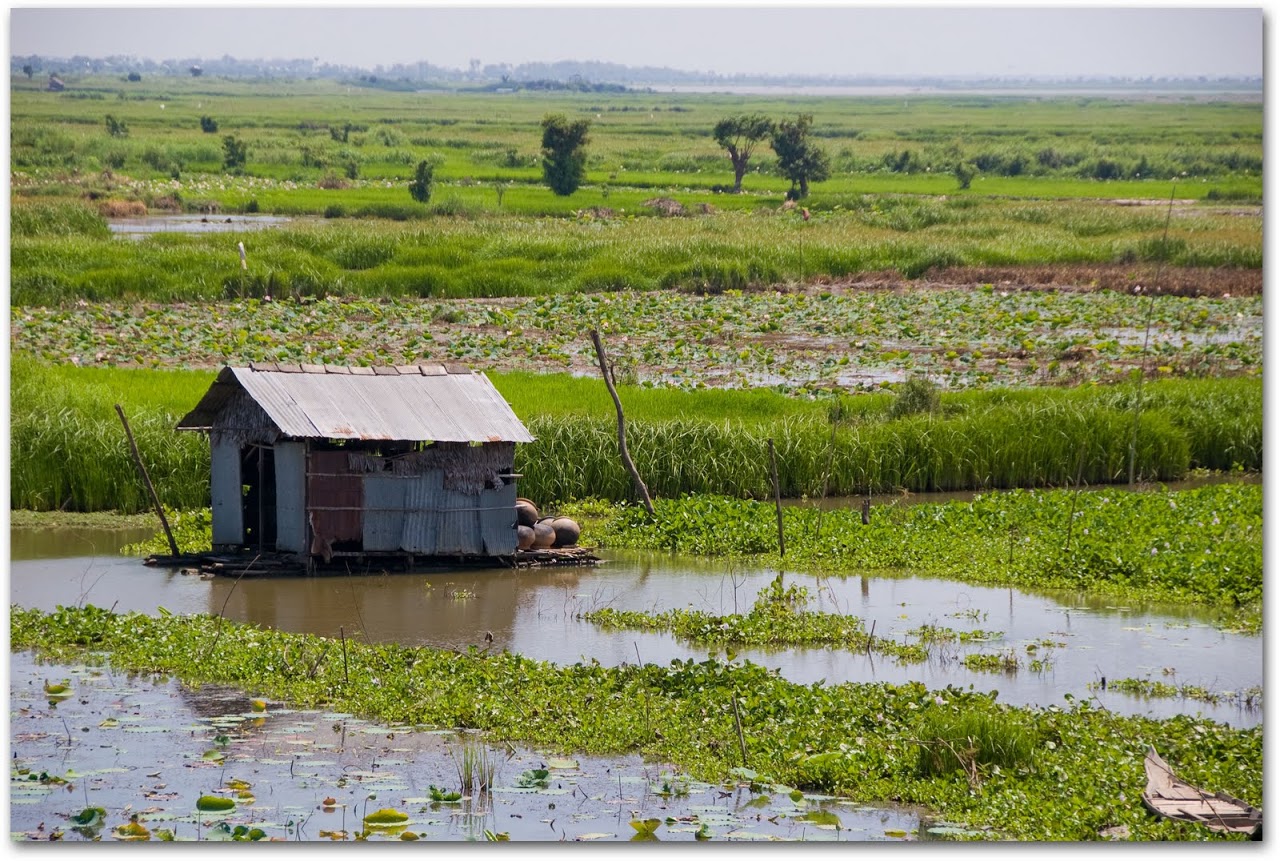
|
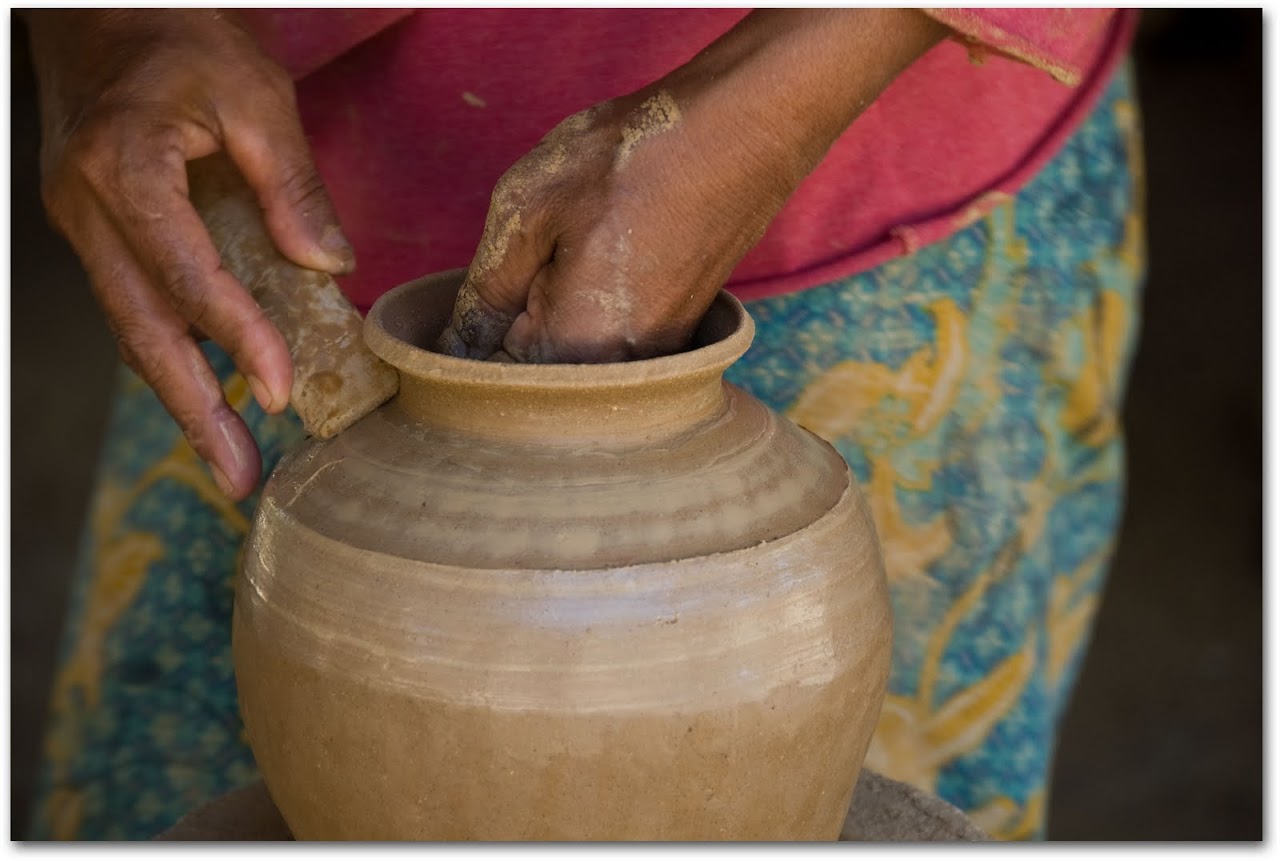
|
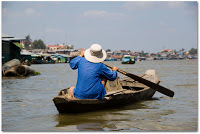
|
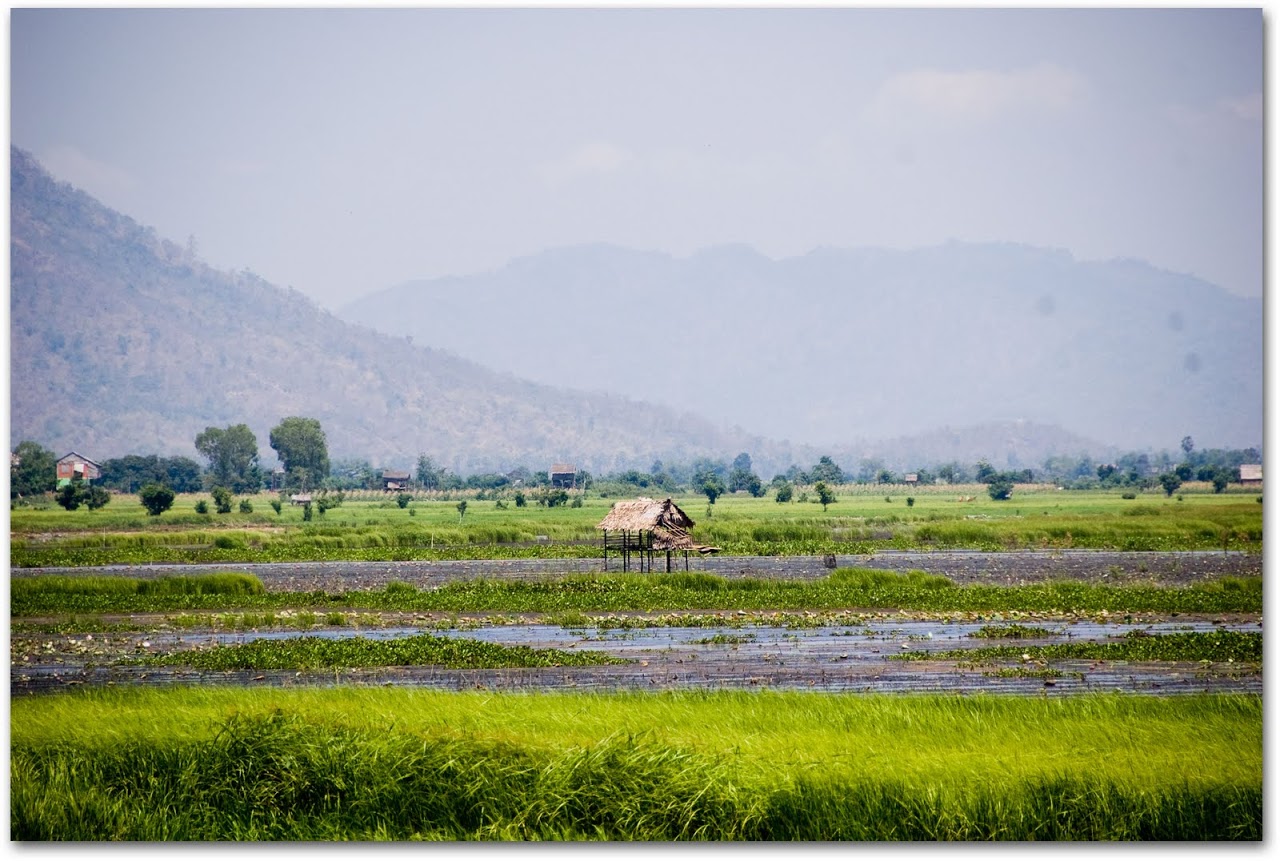
|
Everyone smiled at us, talked to us, and laughed. They were proud that we had come to their town, to see them and take part in their lives. The college student who rode with us back to Pnomh Penh told us, “Pnomh Penh is nice but Kompong Chhnang . . . Kompong Chhnang is a good place.”








